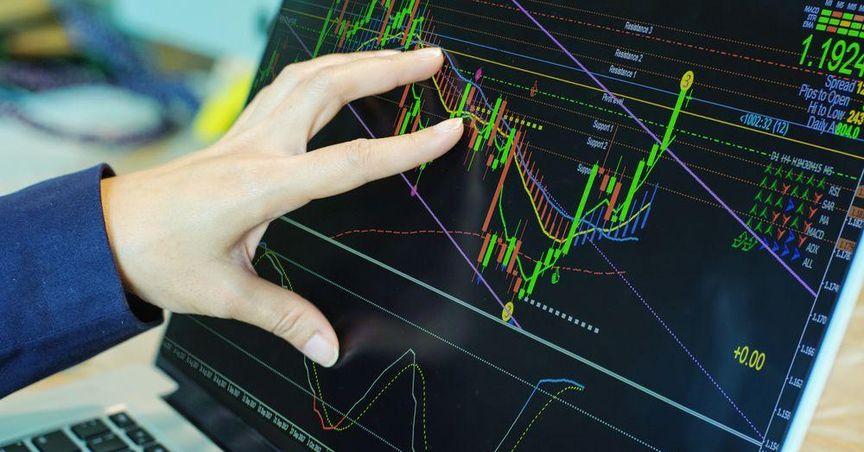Highlights:
- Heavy trading volumes can cause delays in the reporting of stock trades, known as 'tape is late.'
- The lag occurs when transactions are processed faster than they can be reported on the ticker tape.
- This delay can hinder real-time decision-making and affect market transparency for investors.
In the world of stock trading, the term "tape is late" refers to a situation where the reporting of trades on the ticker tape falls behind due to an exceptionally high volume of transactions. The ticker tape is a digital display that shows real-time stock prices and transaction details. When trading activity is so intense that it overwhelms the reporting system, it creates a noticeable lag between the time a trade is executed and the time it appears on the tape.
How the Ticker Tape Works
The ticker tape continuously updates with the latest trades happening on the stock market. It displays critical information, such as the stock symbol, the price of the last trade, and the volume of shares traded. For active traders and investors, this real-time data is vital for making informed decisions. However, when trading volume surges unexpectedly, the system may struggle to keep up, causing a delay, or what is colloquially known as "the tape is late."
Causes of "Tape is Late"
- High Trading Volume: The primary cause of the tape lag is a sudden surge in trading activity. During events like earnings releases, significant market news, or geopolitical developments, a large number of trades can be executed in a short period, creating a backlog in the reporting system.
- Market Volatility: Increased volatility often leads to heavy trading as investors rush to buy or sell shares based on new information. This heightened activity can overwhelm the capacity of the reporting infrastructure, delaying the appearance of trades on the tape.
- Technological Limitations: While modern trading platforms are equipped with advanced technology, there are still limits to how quickly trades can be processed and reported. If the processing speed is outpaced by the volume of trades, delays are inevitable.
Impact of Late Tape on Market Participants
When the tape is late, it can have significant implications for traders, investors, and the overall market:
- Delayed Market Data: Real-time data is crucial for making split-second trading decisions. A lagging ticker tape can lead to outdated information, making it challenging for traders to react effectively to market changes.
- Price Discrepancies: The delay may cause discrepancies between the reported price on the tape and the actual current market price. This can mislead investors who rely on ticker data for executing trades.
- Reduced Market Transparency: A delayed tape reduces the transparency of the market, as it becomes harder to gauge real-time investor sentiment and trading activity.
Examples of "Tape is Late" Scenarios
Instances of "tape is late" are common during periods of extreme market volatility or significant news events:
- Earnings Announcements: When major companies release quarterly earnings reports, trading volume often spikes, especially if the results differ from market expectations. The surge in activity can overwhelm the system, causing delays in trade reporting.
- Market Opens and Closes: The first and last hour of trading sessions usually see the highest volumes of the day. It is during these periods that the tape is most likely to experience delays.
- Market Crashes or Rallies: During sharp market movements, such as a sudden sell-off or a rapid rally, the influx of buy and sell orders can lead to a tape lag as the reporting systems struggle to process the sheer number of trades.
Managing the Risks of a Late Tape
Investors and traders can take certain steps to manage the risks associated with a late tape:
- Use Direct Market Access (DMA): Traders with access to DMA platforms can receive real-time data directly from the exchange, minimizing the impact of delayed tape information.
- Monitor Order Flow and Level II Quotes: By analyzing order flow and level II market data, traders can gain insights into current market conditions, even if the tape is lagging.
- Be Cautious During High-Volume Events: Traders should be aware of key market events that are likely to trigger heavy trading volumes, such as economic reports, central bank announcements, or political developments, and adjust their strategies accordingly.
Technological Improvements to Address Tape Delays
To address the issue of late tape reporting, exchanges and trading platforms have been continuously investing in technology upgrades:
- Faster Data Processing Systems: Modern exchanges use advanced data processing algorithms designed to handle high trading volumes more efficiently, reducing the likelihood of tape delays.
- Enhanced Reporting Infrastructure: Upgrades to the infrastructure, such as increased bandwidth and improved servers, help exchanges manage the flow of trade data more effectively during peak trading periods.
- Real-Time Analytics: Some trading platforms now offer real-time analytics and alerts for potential tape delays, helping traders adjust their strategies in response to market conditions.
Conclusion
The phenomenon of "tape is late" serves as an indicator of high trading volume and heightened market activity. While it can create challenges for traders who rely on real-time data, understanding the underlying causes and potential impacts can help market participants navigate these periods effectively. Technological advancements continue to reduce the occurrence of tape delays, but during significant market events, the possibility of lag remains a reality that traders must be prepared to manage.
In essence, "tape is late" is a reminder of the dynamic and fast-paced nature of financial markets, where the flow of information is paramount. For traders and investors, staying aware of this lag and its potential implications is crucial for making informed, timely decisions in an ever-changing market environment.




